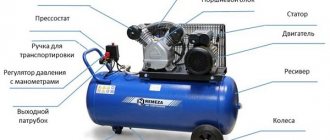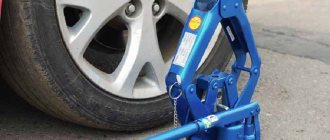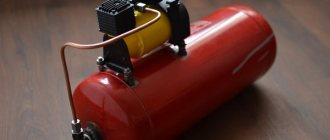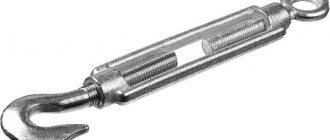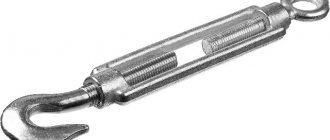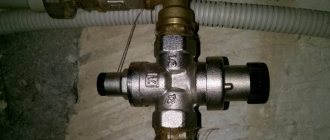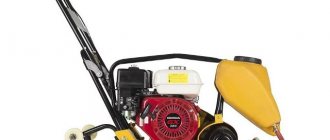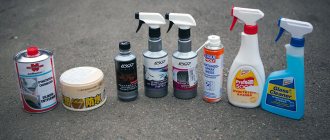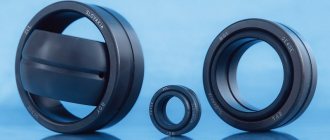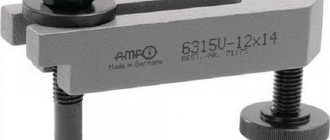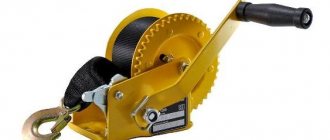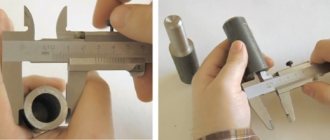Operating principle of a gear compressor
The screw block is an important element of the rotary compressor design. The service life of such an element is approximately 15-20 years. It is worth considering that the compressor rotor has a special shape, due to which certain operational characteristics are ensured.
The principle of operation of the device determines that at the time of air supply there is no vibration or strong noise. The main part of the rotary compressor does not have elements that operate by reciprocating motion. Therefore, the structure can be installed in the immediate place of operation.
The operating principle is characterized by the following features:
- The body is used as the basis of the structure.
- Inside the mechanism there are two gears that are meshed.
- The mechanism has an inlet and outlet pipe.
Refers to rotary compressors devices that have gears that are meshed. It is worth considering that for significant wear of the main parts, a lubricant is added. In addition, there are models that also work without lubrication.
Unit protection systems
High quality components and a carefully calibrated arrangement of functional parts are not enough to ensure that the equipment regularly performs its tasks in production conditions. Therefore, modern models cannot do without additional protective systems. First of all, this is the automatic shutdown of the unit when network overloads are detected. This protects the motor control unit. Since rotary compressors are also prone to overheating of the mechanical part, a cooling system is also introduced into the design. It minimizes thermal loads that affect both technical fluids and structural parts. For models with electronic control, self-diagnosis systems are provided. Thanks to the sensors, the compressor can detect component failures without operator intervention and, depending on the nature of the failure, either correct them independently or send an appropriate alarm signal through indicators.
General description of rotary compressors
The main purpose is to create pressure that will be higher than atmospheric. The type of mechanism under consideration refers to volumetric type equipment.
The rotary compressor received its name due to the peculiar shape of the main rotating elements. The high demand for them is determined by the fact that a huge number of compact models have appeared, which are characterized by high efficiency in use. There is also a rotary piston compressor, which differs significantly from the conventional version.
The group of devices under consideration includes the following mechanisms:
- Cam.
- Screw.
- Spiral.
- Liquid-ring.
- Lamellar.
All varieties of such devices are characterized by a large number of features, for example, a rotary vane compressor does not have many different valves, which significantly reduce the efficiency indicator. In addition, rotary versions have less weight compared to piston ones.
In most cases, a rotary vane compressor is represented by a single unit with a drive. Some versions have an intermediate gearbox that is capable of changing the transmitted force.
Today, compressor units are equipped with an electric motor. In some cases, internal combustion engines are installed, which are characterized by greater productivity.
This type of compressor is found in a wide variety of cases. Very often it is used to create a spray gun, which is required to uniformly apply a special coloring agent to the surface.
Areas of application
It has already been said that compressor units are often used to service pneumatic-based construction tools. But this is only part of the tasks that units of this type are capable of performing. Their specialized niche is still refrigeration equipment. Moreover, these can be directly industrial refrigerators with refrigerators, and household air conditioners. In the second case, compact and low-power rotary compressors are used. Application in industry also focuses on the ability of the installation to operate with refrigerants - the equipment is used at the technological stages of processing slaves, meat, semi-finished products and other food products.
Rotary screw compressor
A rotary compressor is considered a fairly common device that is used to compress air and various process gases. Much of the efficiency depends on the design of the moving parts. High reliability and other properties determine that rotary compressors are installed in industry. The outlet pressure can reach high levels, as with suction.
The design features of the mechanism under consideration include the following:
- The main elements are represented by two screw rotors: one rotates clockwise, the second counterclockwise.
- There is a small gap between the moving element and the body.
- Both rotors are attached to a shaft, which is designed to directly transmit rotation.
- The rotary compressor is equipped with an inlet and outlet valve.
A variety of materials can be used in the manufacture of the main parts, in most cases stainless steel and cast iron.
The operating principle of this mechanism is quite simple. It is as follows:
- From the engine, rotation is transmitted to the driving element, which, due to engagement, transmits rotation to the driven element.
- Both elements are located in a sealed housing with an inlet and outlet.
An important point is that rotary compressors of this type can be oil- or oil-free. Among their distinctive properties the following should be noted:
- The oil significantly reduces the degree of wear on the structure and also acts as a cooling agent.
- Devices that are not supplied with oil last slightly less, but they supply a higher quality medium.
If there is oil in the system, a special filter is required that separates the lubricant from the main medium. If it gets into the highway, the quality of the paintwork will significantly decrease.
In addition, there are quite a large number of advantages of the mechanism in question:
- Moving parts can operate at high speed.
- There is practically no contact between the two moving elements. That is why wear is relatively low even during long-term use of the device.
- You can carry out maintenance yourself.
- Relatively small size and weight.
- The declared operational life is several decades.
- It doesn't require a lot of money to maintain performance.
The above advantages determine the widespread use of these types of rotary compressors.
They can be installed in everyday life or industry and have different sizes and weights.
What to consider when choosing?
Rotary compressors are usually chosen by consumers who need a low-cost, low-noise and at the same time productive source of compressed air. Therefore, industry with all its operating features will be the main area where this type of compressor is used. The rotary engine is most often oriented towards a mains voltage of 380 V. If there is no three-phase line at the site of use, then you will have to make allowances for performance, focusing on 220 V. In addition to the main operating values, the design is also taken into account. Usually it is stationary, but even large-sized modifications in some designs provide for the possibility of movement. This nuance must be kept in mind if the facility plans to service several technological points located in different places.
Rotary compressor with cam rotors
This design option is used when it is necessary to transfer a large volume of substance in a minimum period. Among the features we note:
- The moving parts do not touch. This is why the likelihood of severe wear is reduced.
- There is no need to add oil, which greatly simplifies the maintenance process.
- Larger devices have an electric motor that is connected directly to the main element. Smaller versions are equipped with a V-belt drive.
There are quite a large number of varieties of such devices. The main elements can be called:
- Frame.
- Rotor.
- Timing gears.
- Sealing gaskets.
- Bearings.
The operating principle of the device can be described as follows:
- The rotors are not in mesh during operation.
- The gas inside is not compressed.
- It is possible to install moving elements on parallel screws.
- The cams are not touching.
- Bearings and distribution parts are lubricated during operation.
The scope of application of such devices is very extensive. An example is various industrial installations, as well as equipment for applying paints and varnishes.
Rotary vane compressor
In this case, the rotor is equipped with several sliding plates, which are mounted eccentrically in a cast housing. In addition, the following features of such devices are distinguished:
- Oil filled.
- The efficiency of the mechanism reaches 90%.
- Can be used to generate increased pressure in the main line.
- There are stationary and portable versions.
- A pressure of more than 13 bar can be created in one stage.
- Rotation is created by a motor.
- There are flanges for connecting the main line.
- The manufacture of the cylinder is carried out using cast iron.
The high efficiency of the device can be associated with its wide distribution. An example is cooling systems or central vacuum supply.
Liquid ring compressors
Such models are considered a universal device in which pressure is created using a liquid ring. It operates on the principle of a piston. In the case under consideration, there is only one rotor located in the central part. In most cases, cast iron is used in manufacturing; the carbon steel shaft is designed to withstand large axial loads. It is worth considering that there are two types of such devices - single-stage and multi-stage.
The operating principle of this mechanism is characterized by the following features:
- The rotor and cylinder are partially filled when the liquid medium is compressed, thereby forming a ring.
- When the piston moves directly, a gas pocket is formed.
- The service liquid in most cases is represented by ordinary household water.
Such execution options do not occur as often as others. But they have the following advantages:
- Possibility of operation at sub-zero temperatures.
- Reliability. As practice shows, the mechanism can last for several years without any problems or defects.
- Efficient heat dissipation.
- Easy maintenance.
- The device can be used to operate in almost any environment.
- There is no direct contact between the rotating elements, due to which the degree of wear is significantly reduced.
In the manufacture of the main elements, steel or cast iron is used. Both materials are characterized by increased resistance to moisture or other chemicals.
Scroll compressors
Spiral designs are the least common, as they are represented by volumetric machines. Inside there are spirals that are nested inside each other, due to which the required pressure is created.
Despite the fact that this technology has become widespread, it is used relatively recently. Scroll rotary compressors are widely used in industry and everyday life.
Among the design features we note:
- The housing is sealed, often produced by casting or welding. This ensures a high degree of efficiency of the spiral air blower.
- There is a coupling and a block of spirals.
- An engine is used as a source of rotation.
In most cases, the design has a vertical layout. A special crankcase is created to store lubricating fluid.
Types of construction
Usually there are rotary type compressors with swinging and stationary compression elements. The first model of the working group assumes compression of the refrigerant through a rotary eccentric on the engine. This is in some way an independent element that provides a relatively high compression ratio. However, due to increased friction, such units are considered ineffective. At least costly in terms of maintenance. On the other hand, rotary vane compressors eliminate the unwanted effect of intense friction. The refrigerant is compressed by plates fixedly mounted on the shaft. They are stationary relative to the shaft itself, but perform their compression function together with it.
Main parts of a screw compressor
A rotary compressor consists of several main elements, which ensure the supply of medium under high pressure. Considering the design features, we note:
- A pair of worm geared rotors, one of which is driving, the second is driven.
- The housing can be manufactured in a variety of ways and is characterized by high tightness.
- The volume of the structure depends on the shape of the rotor, as well as their dimensions.
A wide variety of rotor profiles are found in production. In general, we can say that the main operational characteristics largely depend on this.
In conclusion, we note that rotary compressors are one of the most common today. When choosing, attention is paid to the technical condition, type of materials used in manufacturing, working volume and many other points.
Maintenance
In conditions of regular operation, preventive inspection sessions must be carried out in accordance with the schedule. An oil change and inspection of connecting parts are performed before each procedure for using the equipment. If critical deformation of elements or wear of consumables is detected, air compressors are repaired, which can be expressed by replacing faulty components. Technical restoration of the same deformed elements is undesirable, since their service life will be lower in any case.
Special attention is paid to the channels for the supply of oil and coolants. Filters, membranes, seals and hoses interact with them - this infrastructure should be regularly cleaned, washed and also replaced if necessary. By the way, repair of air compressors in the form of restoration of fan blades and radiator grilles is carried out precisely in those cases where the maintenance personnel paid insufficient attention to combating blockages and contamination of the structure.
